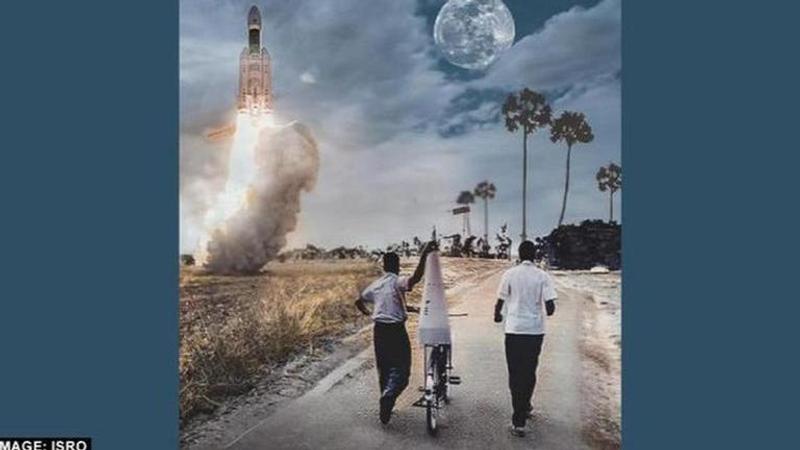Published 23:33 IST, August 23rd 2023
ISRO's throwback from carrying rocket parts on bicycle to putting India on the Moon
There was a time in ISRO’s history when scientists used a bicycle and bullock cart for carrying individual parts of the rocket for assembly.

The Indian Space Research Organisation (ISRO) etched its name in history on Wednesday (August 23) by becoming the world’s first country to soft land on the lunar South Pole, which is considered to be extremely complex and difficult by space agencies across the world. The communication link between the Lander and the Mission operations centre in Bengaluru was established after the soft landing on the Moon. Later, the lander imager camera also beamed pictures of the surface around the Moon’s landing area. It’s important to recollect that 40 per cent of the Moon missions in the last 60 years have failed.
ISRO has repeatedly proved its calibre, ever since its foundation over five decades ago, for big-ticket missions beyond low-Earth orbit and to the Moon and Mars, humanity's next frontier. With the launch of the Chandrayaan-3 mission from the Satish Dhawan Space Center in Andhra Pradesh's Sriharikota, on July 14, and then successfully landing lander and the rover on the lunar surface on Wednesday (August 23) the agency proved it yet again. ISRO might not have an overwhelmingly large budget like NASA or the European Space Agency (ESA), but it has delivered significant results despite operating on a shoestring budget right from the beginning.
Humble beginnings - Using bicycle, bullock cart for transporting rocket parts
The establishment of the Thumba Equatorial Rocket Launching Station (TERLS) in Thiruvananthapuram in 1963 marked the beginning of India's space journey. ISRO launched the Nike Apache rocket, the first on Indian soil, in the same year. This rocket weighing 715 kg and built by NASA took off with a 30-kg payload to an altitude of 207 km. Notably, this happened when NASA's Apollo program, which went on to land 12 men on the Moon, had already begun in 1961.
The launch of India's first indigenously-made satellite, 'Aryabhatta' was the next major event that followed, thanks to the Russian space agency, Roscosmos. It launched the satellite on April 19, 1975, using its Soviet Kosmos-3M rocket from Kapustin Yar.
Parallely India also launched the indigenously designed 'Rohini' satellite RS-1, aboard the Satellite Launch Vehicle-3 (SLV-3E2) on July 18, 1980. After a decade of hard work by the team led by the 'Missile Man of India', APJ Abdul Kalam, this was India's first successful launch of an experimental rocket. Weighing 35 kg, the satellite lasted a little over a year.
You might have come across the picture above that shows scientists using a bicycle for carrying individual parts of the rocket for assembly. It is from the time when ISRO was preparing for the launch of its first-ever launch vehicle, the SLV-3 which was a 22-meter-long, all-solid, four-stage vehicle weighing 17 tonnes. Another famous picture that reminds us of the agency's humble days is the use of bullock carts for transporting satellites.
(Scientists at ISRO transporting the APPLE satellite on a bullock cart)
The picture above showing ISRO scientists carrying a satellite on a bullock cart dates back to 1981. This was when ISRO developed its first indigenous and experimental communication satellite named Ariane Passenger Payload Experiment (APPLE). With a mass of 670 kg, the satellite was launched using the Ariane Space's Ariane-1 rocket from Kourou on June 19, 1981. It lasted for two years allowing ISRO to conduct a range of experiments.
Updated 23:33 IST, August 23rd 2023




